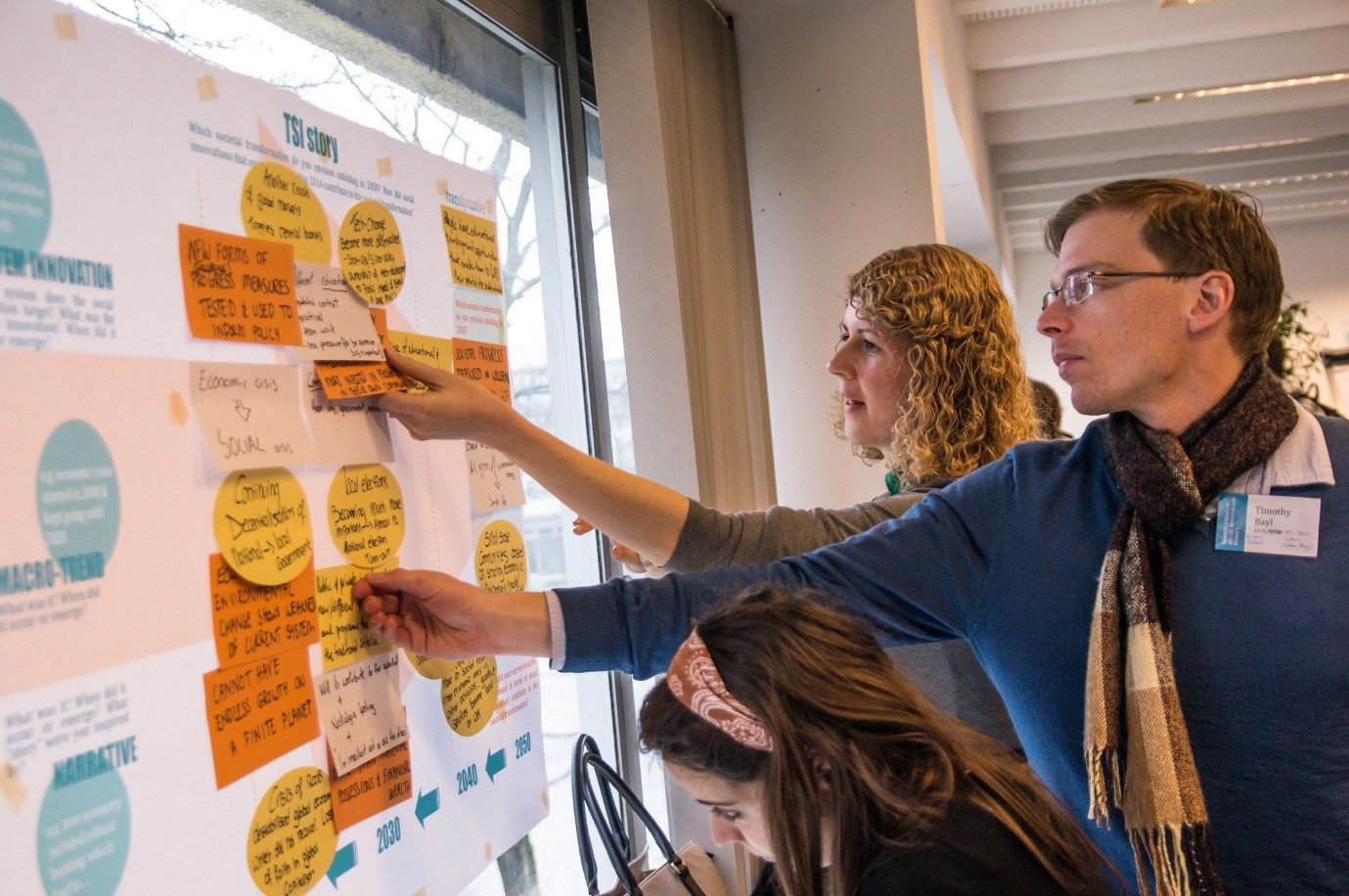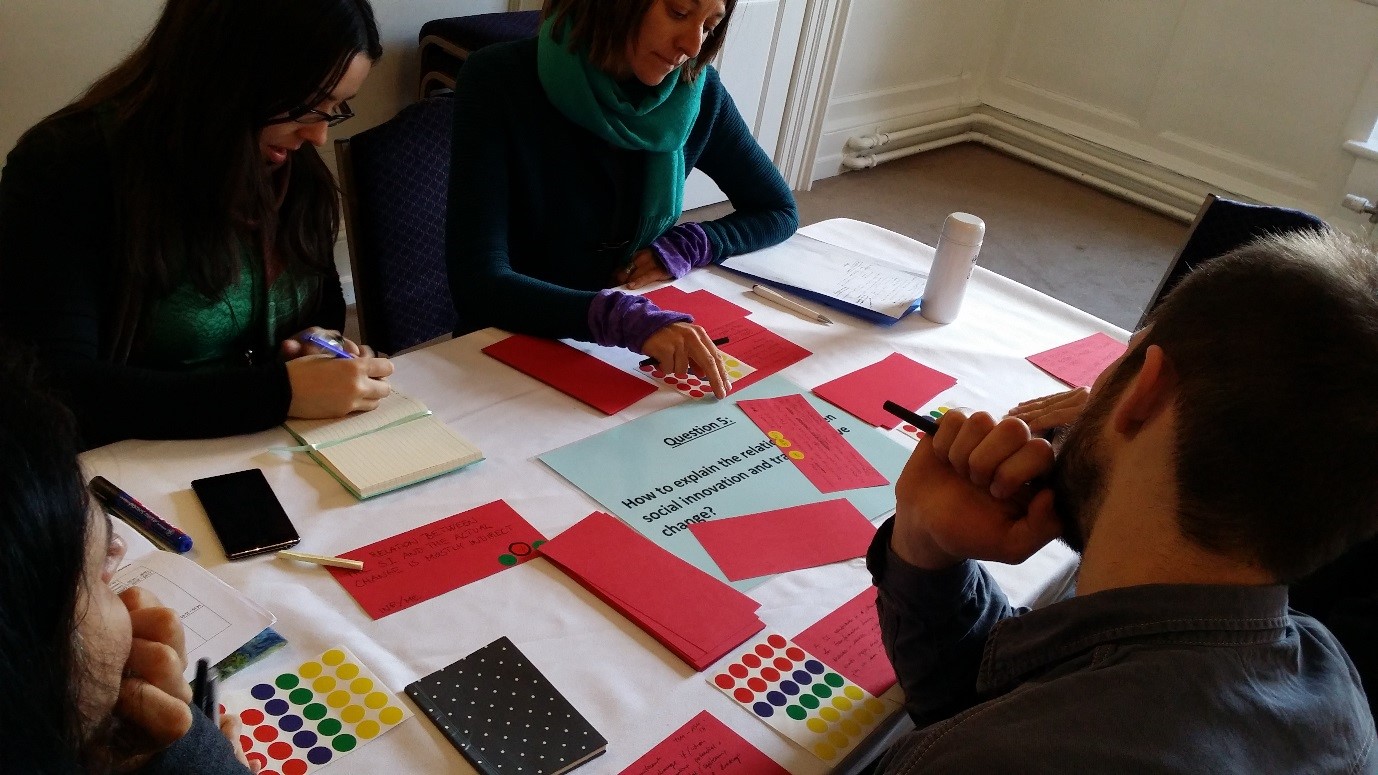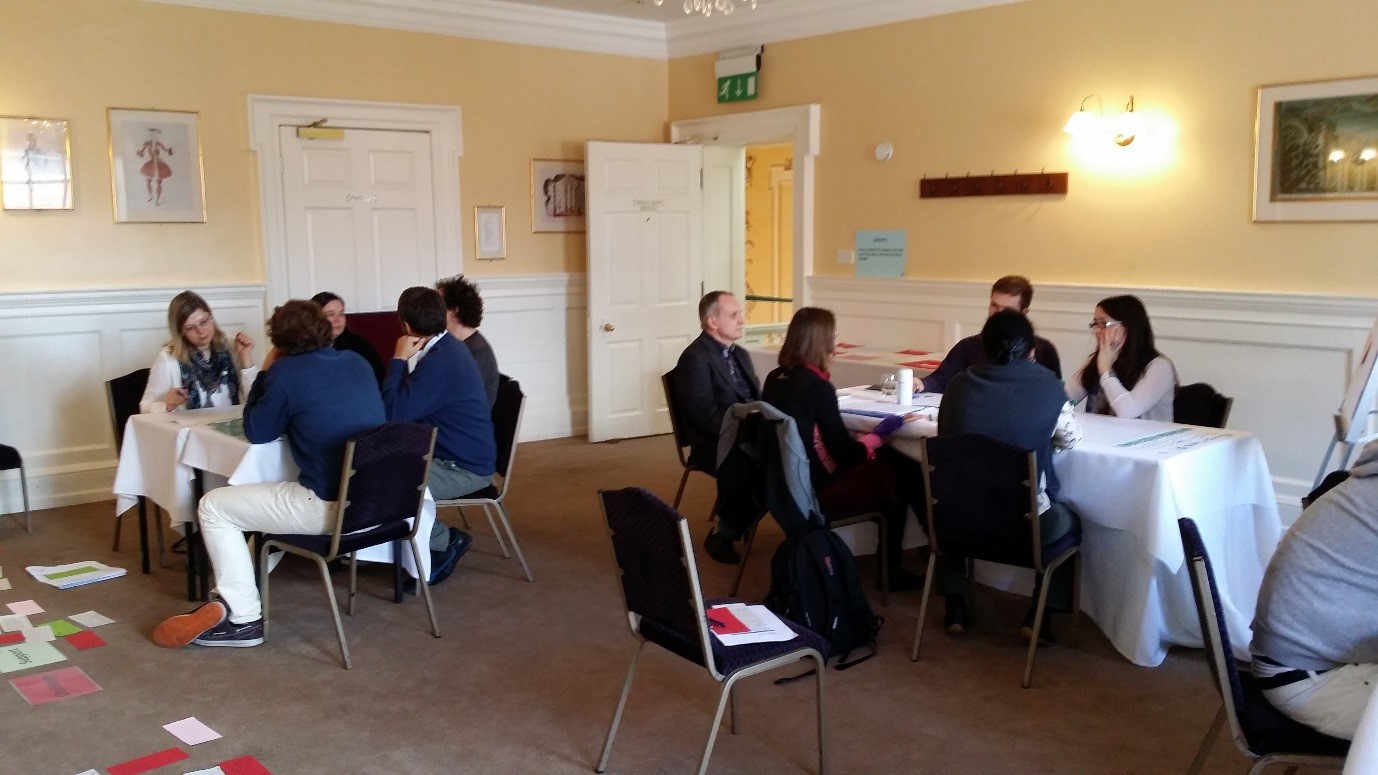By Linda Zuijderwijk (IHS)
We are exploring the use of stories and narratives as vehicles to integrate the theory-development and empirical work. To develop such stories (or narratives), various participatory and cooperative methodologies were designed, ranging from associative methods to methods based on back-casting.
During our first workshop on Transformative Social Innovation: Insights from state-of-the-art research and practice, we tested a first prototype of what we call a ‘TSI-story’. The use of story-telling and back-casting was a means to test a prototype process (the TSI-story) to guide practitioners and entrepreneurs’ thinking about ways of societal change. The participants were asked to design their TSI-story by thinking back from 2050: which societal transformations would have taken place by then? And how did ‘their’ social innovation contribute to that? And how was this related to macro-trends or game-changers, such as the climate and financial crisis, innovations of a systemic character, such as welfare reforms, and inspiring stories, as for example on the Sharing Economy or Solidarity Economy? The participants split in groups and drafted their individual, and working towards a collective, TSI-story on a large piece of paper that contained all the elements their story could contain on a time line.

Crafting a TSI-story. Photo by Tim Strasser (Rotterdam, February 2015)
This method helped participants to relate their own ideas and initiatives to others and to see the relation between their initiative and system innovations, narratives of change, game-changers or macro-developments.
Our lessons learned?
During a March-workshop in Norwich for TRANSIT-researchers, we had the opportunity to prototype other forms of story-telling as a method to collectively develop theory. Over the course of two days, we worked with free association, world café’s, used many stickers and were hosted by ‘question champions’. The researchers were challenged to explicate every bit of knowledge they had on a particular case study and to feed it into theory-development. In a first round of free association - related to their case studies, with the help of the popular game ‘Dixit’ - researchers tried to come up with various statements on their cases. This enabled researchers to call upon their more or less unconscious expertise that they gained during their research.
In next rounds we used a world-café setting, in which groups of researchers focused on answering one of the five questions that TRANSIT has asked itself, amongst others, ‘How to explain social change in general and transformative change in particular?’. The questions are now headed by a ‘Question champion’, meaning that one of the researchers ‘owns’ the question and has the responsibility of reporting back in the plenaries and facilitate the various sessions.

Writing down propositions and tweaking, using stickers. Picture by Linda Zuijderwijk.
These questions were answered with ‘propositions’, meaning that each researcher would write down what the answer to such a question would be, based on her/his experience with her/his case study. The next step is that the researchers on the table put a sticker on each of the answers: red meaning they don’t agree from their own perspective, green meaning they do agree and yellow meaning they don’t agree yet, but they could if they tweak the proposition, hence make the answer better fit to their own experiences.

Agreeing and disagreeing: a collaborative story in the making. Picture by Linda Zuijderwijk.
These groups of researchers stay together and travels to another table- except for the Question champion, who acts as the table host. In the second round, they enter a table with already formulated propositions. They think about new propositions that are not on the table yet and continue to work on the propositions that were already there: another round of stickering, agreeing, disagreeing and tweaking occurs. More rounds follow. After several rounds, we have harvested ‘propositions’ that all together can be integrated into the theory that is newly developed in TRANSIT.
Our lessons learned?
Do you want to learn more about storytelling? Watch these TED Talks.
Stay informed. Subscribe for project updates by e-mail.